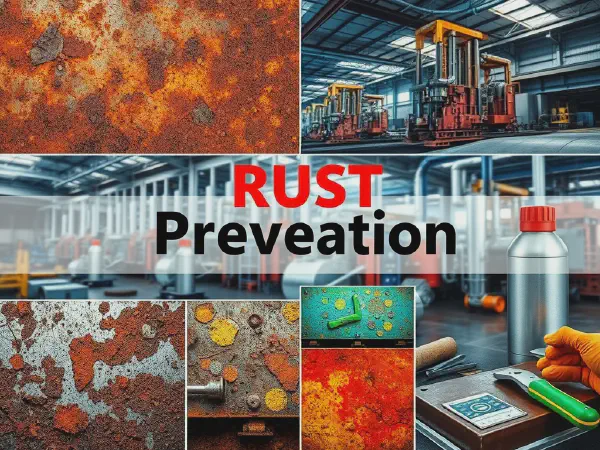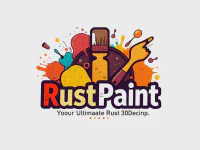Top Industrial Rust Solutions for Effective Prevention

Industrial Rust Solutions: Protecting Assets and Ensuring Longevity
Industrial Rust Solutions are essential for maintaining the integrity and longevity of equipment used in various industries. Rust is the result of the corrosion of metals, leading to significant degradation and increased maintenance costs. By implementing effective rust solutions, industries can drastically reduce downtime, extend the life of their machinery, and ultimately save on capital expenditures. The approach to handling rust can range from preventive measures to innovative treatment technologies, all of which play a crucial role in safeguarding industrial assets.
Preventive strategies are the backbone of any Industrial Rust Solutions program. This includes applying protective coatings that create a barrier between the metal surface and corrosive elements. Furthermore, employing rust inhibitors can help to slow down the oxidation process. Choosing corrosion-resistant materials can also mitigate the impact of rust in environments prone to moisture and chemicals. Finally, establishing regular maintenance schedules ensures that any signs of rust are identified and addressed promptly, further enhancing the durability of equipment.
Rust removal techniques are another component of Industrial Rust Solutions. Mechanical methods such as sandblasting or grinding can effectively eliminate rust from surfaces. In cases where mechanical methods are not feasible, chemical rust removers offer a viable alternative, utilizing active ingredients to dissolve rust without damaging the underlying metal. Electrolytic rust removal is an innovative technique that uses electrolysis to reverse the rusting process. Combining these methods with best practices, like wearing proper safety gear and ensuring adequate ventilation, will maximize effectiveness and safety.
For companies looking to extend the lifespan of their equipment, exploring effective Industrial rust solutions is essential.
Innovative rust treatment technologies have emerged, offering advanced solutions to combat rust in industrial applications. Nanotechnology plays a key role in rust prevention by creating coatings that are more resilient and can self-repair. Bio-based rust treatments harness natural materials to provide effective protection against corrosion while being environmentally friendly. Additionally, smart coatings that change properties in response to environmental conditions add a new layer of protection. Advancements in rust-resistant alloys ensure that materials used in industry are less prone to corrosion, providing longer-lasting solutions.
Understanding industry standards and regulations is vital when implementing Industrial Rust Solutions. ISO standards provide guidelines for corrosion prevention, ensuring that organizations adhere to recognized best practices. Moreover, environmental regulations require industries to use eco-friendly rust solutions and limit harmful emissions during treatment processes. Following best practices in industrial settings not only improves reliability but also boosts reputation and compliance with regulatory bodies. Compliance guidelines for rust solutions help companies navigate their obligations, leading to more effective management of rust-related challenges.
Preventive Measures for Rust Management
Protective coatings for metals are a fundamental preventive measure in Industrial Rust Solutions. These coatings can be paint-based, like epoxy or polyurethane, or powder coatings that provide a tough, protective layer over metal surfaces. By creating an impermeable barrier, they keep moisture, air, and chemicals at bay, significantly reducing the chance of rust formation.
The use of rust inhibitors is another important tactic in preventing corrosion. These are chemical compounds that, when applied to metal surfaces, reduce the rate of oxidation. They can be incorporated into paints, coatings, or applied directly to metal surfaces to provide ongoing protection against rust.
Corrosion-resistant materials are a wise choice in environments prone to rust. Stainless steel, aluminum, and certain alloys are designed to withstand corrosion better than standard steel. By investing in these materials upfront, industries can avoid frequent repairs and replacements.
Regular maintenance schedules are crucial for any effective Industrial Rust Solutions strategy. Conducting routine inspections for signs of rust, applying protective measures periodically, and having a plan in place for immediate response to any rust detected ensures that assets remain in optimal condition over time.
Rust Removal Techniques
Mechanical rust removal methods involve physically scraping, sanding, or blasting rust off metal surfaces. Techniques like sandblasting or using wire brushes can be effective for larger areas, while smaller items may require hand sanding or grinding tools. This method is often the first choice for straightforward rust removal tasks.
Chemical rust removers use acidic or alkaline solutions to dissolve rust from metal surfaces. These products can be sprayed or brushed onto the rusted area and typically require minimal effort, allowing for uniform application. It's important to follow the manufacturer's instructions for safety and effectiveness when using these chemicals.
Electrolytic rust removal is an innovative technique that utilizes electrolysis to convert rust back into iron. This process involves submerging the rusted item in an electrolyte solution and using an electrical current to draw the rust off the metal, making it effective for delicate or intricate components that could be damaged by mechanical methods.
Best practices for rust removal include ensuring the area is well-ventilated when using chemical removers, wearing appropriate safety gear, and always cleaning the surface thoroughly post-removal to prevent the return of rust. Moreover, applying a protective coating after rust removal is crucial to prevent future corrosion.
Innovative Rust Treatment Technologies
Nanotechnology in rust prevention is an area of great potential. By using nanoparticles, coatings can be developed that provide enhanced adhesion, resistance to moisture, and self-healing properties. These advancements lead to longer-lasting and more effective rust protection.
Bio-based rust treatments are gaining popularity due to their eco-friendly approach. Utilizing natural ingredients derived from plants, these treatments can effectively prevent rust formation while minimizing environmental impact, thus meeting a growing demand for sustainability in industrial practices.
Smart coatings represent the next frontier in rust treatment technology. These advanced coatings can change their properties in response to environmental factors, such as humidity and temperature, to provide dynamic protection against corrosion. For instance, some smart coatings can release protective agents when conditions become conducive to rust formation.
Advancements in rust-resistant alloys have led to the development of new materials that inherently resist corrosion better than traditional metals. These alloys are particularly beneficial in harsh environments where immersion in water or exposure to chemicals is common, ultimately contributing to longevity and reducing maintenance costs.
Industry Standards and Regulations
ISO standards for corrosion prevention set a benchmark for best practices in rust management. Adhering to these standards ensures that organizations implement the most effective strategies for preventing corrosion and maintaining equipment integrity.
Environmental regulations on rust treatment have become stricter, imposing limitations on the types of chemicals and processes that can be utilized. Companies must be mindful of these regulations to avoid fines and improve their sustainability initiatives, particularly in industries with significant ecological footprints.
Best practices in industrial settings dictate that rust solutions should not only focus on immediate removal and prevention but also consider the overall health and safety of employees, as well as regulatory compliance. These best practices include maintaining thorough documentation and training staff on rust management protocols.
Compliance guidelines for rust solutions assist organizations in navigating legal and environmental obligations related to corrosion management. Regular audits and reviews of rust management practices can ensure ongoing compliance and identify areas for improvement.
Cost-Effective Rust Management
Budgeting for rust prevention is crucial. Industries must allocate resources to implement preventive measures that could potentially save them significant costs associated with equipment replacement and downtime due to rust-related failures.
The ROI of industrial rust solutions should be measured not just in terms of immediate cost savings but also in the long-term benefits, such as improved equipment lifespan and enhanced operational efficiency. A robust rust management program can lead to significant financial returns over time.
Long-term savings from preventive measures can be substantial. Industries that invest in robust rust prevention strategies often find that they see reduced overall maintenance costs and fewer operational interruptions, which enhances productivity.
Case studies on effective rust management provide valuable insights into best practices and successful strategies. By examining organizations that have successfully implemented comprehensive rust solutions, others can learn from their experiences and adapt their approaches accordingly.
